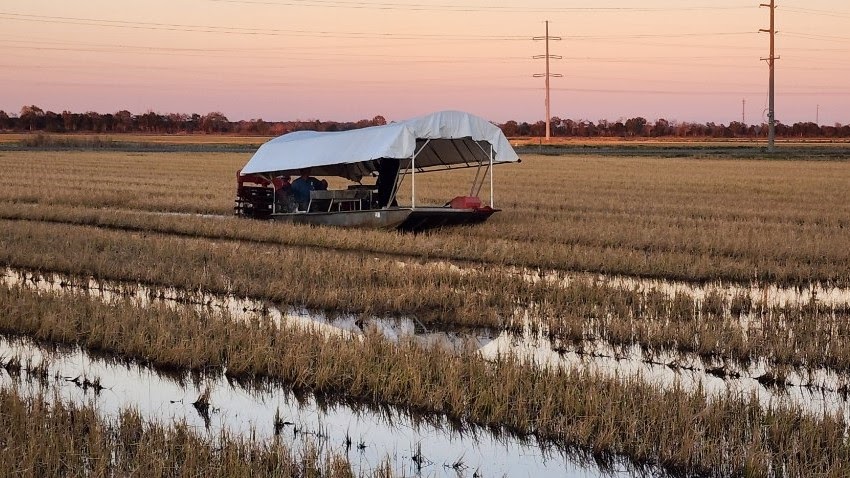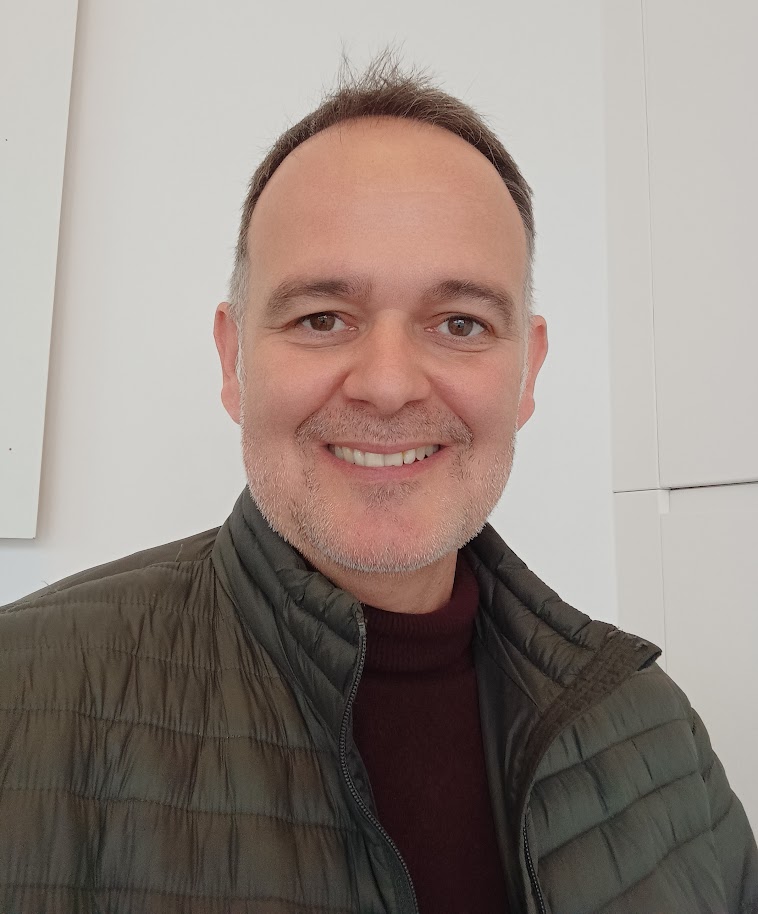

When Jesús López Colmenarejo, a leading agrifood journalist from Grupo Editorial Agrícola in Madrid, Spain, visited Louisiana last year, his eyes were opened to the reality of sustainable U.S. agriculture. Find out more about his experience meeting multi-generational farmers, learning about the work being done to protect Louisiana’s disappearing wetlands, and witnessing the close collaboration between rice farmers and researchers.
Last December, I had the opportunity to see American agriculture in action, thanks to the Office of Agricultural Affairs at the U.S. Embassy in Madrid. My trip showed me that the demands for sustainability in the E.U. also exist in the American giant, that times change, and that perceptions don’t always match the reality.
The trip was arranged by the U.S. Sustainability Alliance (USSA), an organization founded in 2013 that has emerged as the voice of sustainable food and agricultural production in the United States.
USSA currently represents 24 farming, fisheries, and forestry associations, in addition to supply chain partners, who are together responsible for more than $7 billion of annual U.S. food and agricultural exports to the EU. USSA’s mission is effectively to share with its international counterparts in Europe and other countries the reality of U.S. agriculture, providing information on production practices, its members, and the quality of U.S. food and agricultural products. After all, people won’t know things if you don’t tell them…
The Mississippi – much more than a river
This trip highlighted the strategic importance of the state of Louisiana and, more specifically, the Port of Greater Baton Rouge as a global center of grain transportation and export. Unsurprisingly, 60% of grain exports from the state pass through this port, and food products from 37 of the 50 American states are transported by the river since the Mississippi basin stretches from the Rocky Mountains to the easternmost states of the United States.
I see it as a great aquatic funnel that channels and is the backbone of life and commerce in the United States, much more than we can believe in Spain, where none of our rivers has a similar function.
Environmentally, the Mississippi River is home to an immense amount of flora and fauna (including an estimated 260 species of fish) throughout its length and breadth – some 3,238,000 square kilometers. Concerns about the sustainability of the Mississippi were corroborated by a visit to the LSU Center for River Studies, where we saw one of the world’s largest physical models of the river bed: the physical model of the Lower Mississippi River. This river model, which is over 3,000 square meters, is impressive and is based on the topography and bathymetry of the Mississippi River delta that covers southeastern Louisiana. The model can replicate the flow, water levels, and sediment transported by the river, with a year of the Mississippi River simulated in one hour. Scientists, engineers, and students can view, experiment, and conduct research using this state-of-the-art model.
The ultimate goal of this large deployment is none other than to monitor Louisiana’s wetlands and the effect of ongoing coastal restoration projects along the coast that mitigate the impact of human activity on the river.
The wetlands in the area are disappearing at a dangerous rate, from 6200 hectares per year, threatening crops such as rice, which are of great importance in the region. The technical and scientific study of rice is undertaken at the Rice Research Station (also linked to the University of Louisiana), a research facility responsible for many sustainability improvements in the U.S. rice industry. At its facilities, we saw how much of the research is focused on environmental improvements: analysis of methane and carbon dioxide emissions according to different irrigation practices or management of different cropping patterns to limit soil loss. I also think it is remarkable to highlight the importance given by the researchers to technology transfer and their closeness to producers, perhaps something that, self-critically, I do not always perceive in Spain.
Future generations, certification, technology… it’s all about the environment
During the trip, we also had the opportunity to visit farms growing other crops besides rice, such as that of the Frey family, owners of Four Oaks, where we saw sugar cane and soybeans.
Many U.S. farmers are committed to being multigenerational farmers. This desire for continuity means that their aim is not only to be profitable but also to leave the land in better shape for the next generation, which is why they joined the environmental certification program promoted by the Louisiana government. We also visited the Hardwick Planting Company, a farm of almost 5,000 hectares that grows cotton, corn, soybeans, wheat, and sorghum. They participate actively in the Conservation Reserve Program (CRP), a land conservation program administered by the USDA Farm Service Agency (FSA), under which, in exchange for an annual payment, enrolled farmers agree to remove environmentally sensitive land from agricultural production. At Hardwick Planting Company, they do not envisage going organic as they think it would be complex in terms of pest management and believe that sustainability does not only have to be “eco”.
At the farm of R. Schexnayder & Sons, soybeans, corn, wheat, and oats are also produced with sustainability in mind. Their approach is complementary: “When we harvest, in addition to the grain, we collect thousands of data points that allow us to make decisions in the following season, saving inputs.”
For them, technology is the ally of the environment in the new agriculture.


